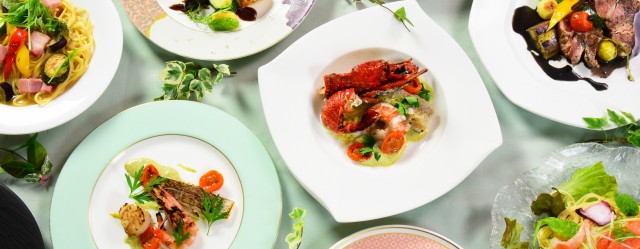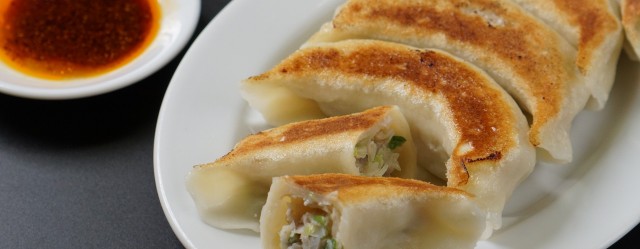
This month, we will take up the topic on the page of “Guidelines related to the Act against Unjustifiable Premiums and Misleading Representations” (the Consumer Affairs Agency) for business operators handling foods to check it again. I hope this will be good opportunity to remind people of the importance of “Misleading representations” under the Act against Unjustifiable Premiums and Misleading Representations.
Points to note
The term “labeling” as used in the Act against Unjustifiable Premiums and Misleading Representations means advertisement or labeling in general made by a business operator to inform consumers of the quality, standards, other contents, prices and other terms and conditions of the goods and services it supplies as a means of attracting customers.
Concept under the Act against Unjustifiable Premiums and Misleading Representations in relation to food labeling of menus, dishes, etc.
Regarding labeling of menus and dishes provided by hotels, department stores, restaurants, etc., the Act against Unjustifiable Premiums and Misleading Representations (Q-1 below) and specific examples (Q-2 and thereafter) are explained in an easy-to-understand manner. The content is related to familiar menus and dishes so that it will be easier to understand misleading representations concerning the quality/standard of a product or service.
Q-1 In what cases do the labeling become legal issues regarding menus and names of dishes provided at restaurants, etc. under the Act against Unjustifiable Premiums and Misleading Representations?
<Explanation>(snip) Specifically
(i) In the case where the specific ingredient (A) is indicated in consideration of
-social common sense regarding the dish or ingredient
-the general meaning of terms
-the definitions, standards, specifications, etc. in other acts and regulations, etc. including Food Labeling Act, etc., which are recognized as being socially established
and the ingredient (B) actually used are different from the ingredient (A) above(ii) Based on the case (i) above, in the case where the indication of ingredient (A) in consideration of below is exaggerated to the level that ordinary consumers would not usually be attracted if they knew the difference from ingredient (B) actually used.
-the nature of the food
-the level of knowledge of general consumers about the food and ingredient
-the actual state of transactions of the food and ingredient
-the method of indication on menus, etc.,
-the content of the indication, etc.,
The cases that correspond to two cases above falls under Misleading representations.
In other words, it is important to check “whether the labeled ingredient correspond to the ingredient actually used”.
Operational guideline of Act against Unjustifiable Premiums and Misleading Representations Article 7, Paragraph 2(Guidelines on Advertising Content That Has Not Been Demonstrated)
The Commissioner of Consumer Affairs Agency may request a business operator to submit materials showing reasonable grounds to support the indication. If the business operator fails to submit the requested materials within the set period of time or the submitted materials are not recognized as showing reasonable grounds to support the indication, it is deemed to be a misleading representation. The following two requirements must be met in order for the submitted materials to be considered as reasonable grounds to support labeling.
1. The submitted material must have the contents which have been verified objectively.
The submitted materials must be able to explain that the specific effectiveness and performance indicated are true, and in order to do so, it must be objectively verified content that falls under any of the following.
A. Results obtained from tests and inspections
B. Opinions by experts, professional associations or professional organizations, or academic literature
2.Appropriate correspondence between labeled effectiveness and performance and submitted materials can be foundIn order for the submitted materials to be recognized as showing reasonable grounds to support the labeling, they must be objectively verified as such, and the labeled effectiveness and performance must appropriately correspond to what is verified by the submitted materials.
Page 5 of the Guidelines ‘examples’ gives explanations on “reasonable grounds”. Regardless of whether or not your company’s products are clearly labeled with an emphasis on their superiority, it is important to first consider whether or not they are the ground for the labeling.
Misleading representations as to the country of origin of products
Regarding the country of origin of the product, in principle, the following indication is stipulated as a misleading representation.
… omitted …
B. The following labeling for products produced in a foreign country, where it is recognized that it is difficult for the general consumer to judge that the products were produced in the country of origin
(1) Indication of the name of a country, place, flag, coat of arms, or other similar symbol other than that of the country of origin of the goods
(2) Indication of the name or trade mark of a business operator or designer of a country other than the country of origin of the products
(3) Indication in which all or a major part of the textual representation is in Japanese
The “country of origin” here refers to the country where an act that substantially changes the content of the products (acts of substantial changes) has been committed. Acts of substantial modification of individual product are stipulated in ‘operation rules regarding the definition of “country of origin” in “misleading representations about the country of origin of a product”‘. Targeted food items are “green and black tea”, “soft drinks (including fruit juice)”, and “rice crackers”. ”Country of Origin” in Food Labeling Standards also refers to “the country where an act that causes a substantial change in the content of the product was committed”, so please refer to Food Labeling Standards Q & A (Processing -156,157), etc.
Labeling for soft drinks contain no fruit juice, etc.
For soft drinks, etc. that contain no fruit juice or pulp or a small amount (less than 5%) of fruit juice, the following labeling is defined as misleading labeling without clearly stating “no fruit juice in its ingredients is used” or “the percentage of fruit juice used”.
(1) Labeling of the product name, etc., using the name of the fruit on the container or package of the soft drink, etc.
(2) Labeling of pictures, photographs, or designs of fruits on the containers or packages of the soft drinks, etc.
(3) Labeling of the soft drink, etc. or its container or package if it is coloured, flavoured, or packaged in a color, aroma, or taste identical or similar to that of the juice, pericarp, or pulp of the fruit
In addition, according to Operational standard for “Labeling for soft drinks contain no fruit juice, etc.”, it should be noted that the indication of “percentage of fruit juice” is limited to cases where “the numerical value of the ratio to the standard of Brix scale.
Since labeling subject to the Act against Unjustifiable Premiums and Misleading Representations includes not only indication by the product itself (including containers and packaging), indications at stores, advertisements in flyers, advertisements in newspapers and magazines, but also advertisements on television and the Internet, it can be said the target is applied to “wide range” of labeling, which is characteristic of the Act.
For such a wide range of regulations, it is important to keep in mind common basic ideas. On the same page, there is also a “Collection of Violation Cases”, so I hope this will be an opportunity for you to check again if there is any labeling of your products that might need to be judged if there’s any misleading.
References
- Guidelines related to the Act against Unjustifiable Premiums and Misleading Representations
- Concept under the Act against Unjustifiable Premiums and Misleading Representations in relation to food labeling of menus, dishes, etc.
- Regulations on Advertising Content That Has Not Been Demonstrated
- Misleading representations as to the country of origin of products
- Labeling for soft drinks contain no fruit juice, etc.
Share/Like/Follow:
Newsletter Signup
We issue monthly e-newsletters, which provide you with the latest updates on food labeling/regulations in Japan.
If you want to make sure to not miss any issue, please click below.
Related Service
Research Services on Ingredients & Food Labeling -For the Japanese Market-
We verify the conformity of ingredients and additives with the standards for use in Japan based on specifications such as formulation lists. We also verify the conformity of the proposed labeling of ingredient names, nutrients, etc. with the labeling standards based on specifications such as formulation lists.
Label bank Co., Ltd. Regulatory Review and Development
Based on her knowledge and experience in food quality management, she is engaged in research work on ingredients and labeling drafts for food products distributed mainly in Japan, as well as consulting and lecturing at seminars on food labeling based on her practical experience in the food industry.


